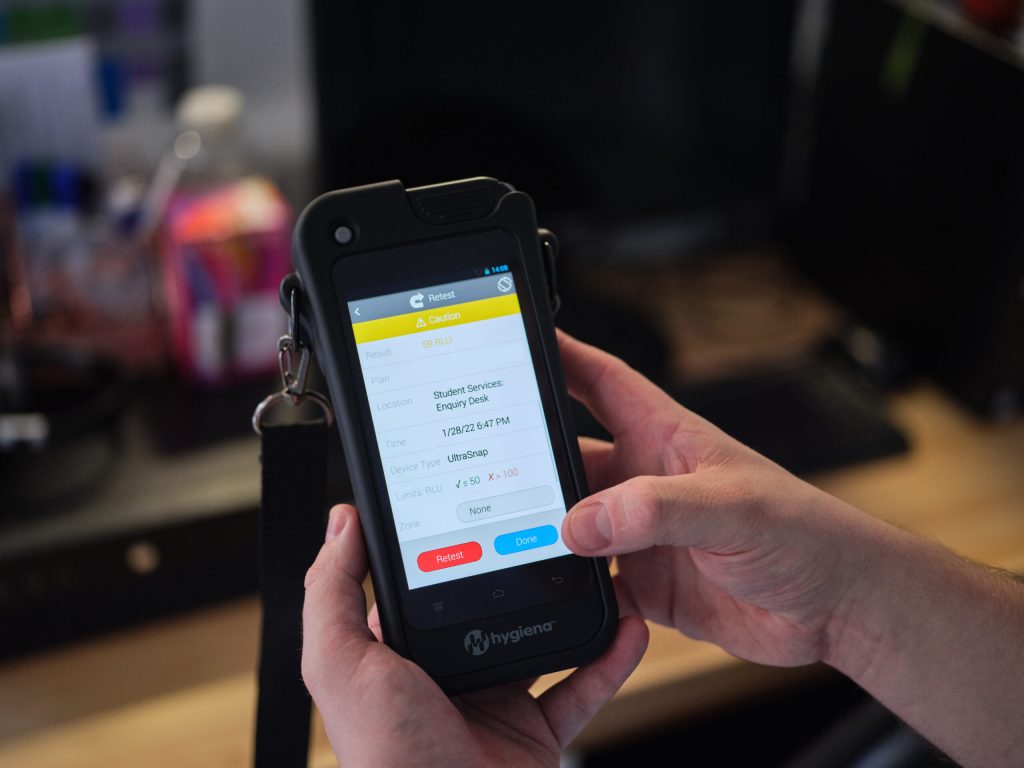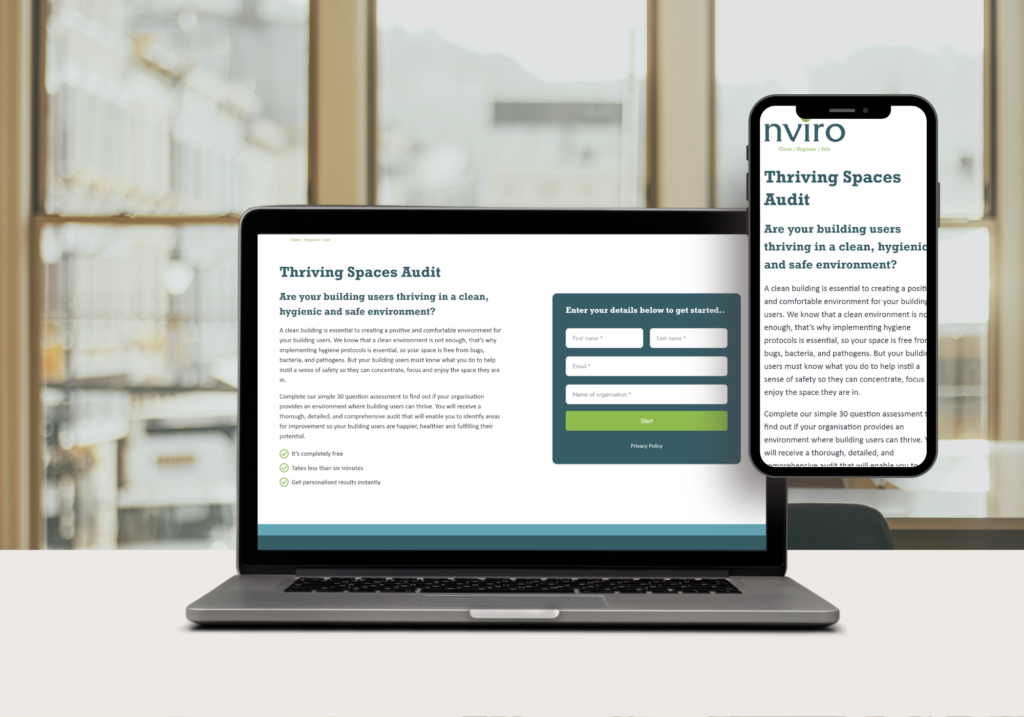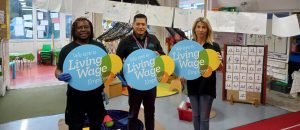What happens when ‘hygienic’ is not as clean as you think?
01 July 2022 Category: Nviro News Schools, Academies and Trusts
There once was a time when the discussion around the upkeep of a school would revolve around simply mopping the floor and wiping away sticky fingerprints. Any extra dimensions – hygiene or safety – facilitated by the cleaners would be a helpful by product of getting rid of visible dirt and mess.
However, at Nviro, we provide a service that goes beyond clean: we keep schools clean, hygienic and safe. Hygiene has an important role to play in keeping students and teachers in school, enabling everyone to get the best results possible. Here we are going to explain how best to deliver it.
What is hygienic?
People have an intuitive understanding of what hygienic means – particularly after Covid. If you have a dirty table, brushing it clear of all its crumbs and stains is a quick way to make it clean. We now know, however, that the way to make sure it is hygienic is to wipe down the whole of the table’s surface with an antibacterial spray.
This is a microcosm of what it means to be hygienic: a hygienic school is one that doesn’t just focus on the visible. It’s one completely free of anything harmful. It’s a place where the surfaces that students and staff touch, and the air that they breathe, is free of dangerous microorganisms. At the most fundamental level, a hygienic school is one that will not make anyone who uses it sick.
The problem is, not everyone invests in hygiene in the right way. We all know that wiping surfaces incorrectly can remove visible dirt and spread harmful bacteria at the same time. But when cleaning budgets are cut, the job of keeping spaces hygienic is often taken out of the hands of the cleaners. Staff get encouraged to clean their own rooms, desks and staffroom areas which, despite the best of intentions, can often move from being a quick wipe down at the end of the day to a promise to do a more thorough clean at the end of the month. But by the time the end of the month comes, that gets moved to a vow to do a deep clean at the end of term. But by the time the end of term comes…
If you don’t believe us, check your toilets. Not because they’re dirty, but because they’re clean. Cleaning toilets, washing hands and daily vigilance is drilled into us. This means that testing consistently shows toilets to be more hygienic than other places in a school. In one study, we found 99% more bacteria on the tap in the staffroom than in the visitor toilet. In another, we found 95% more bacteria on the staffroom coffee machine than the boy’s toilet.
The Health Hazard
Keeping a building clean for the sake of visual reassurance is one thing, but do not underestimate the financial impact of ignoring hygiene practices.
This is where a Health Hazard can arise. If an environment looks clean and people behave as if it’s safe, but it has not been proven to be hygienic, your building’s users will be exposed to health hazards. They will get sick and they will spread viruses and germs. The next stage of this is seeing an increase in sickness rates, and you know the impact that can have on performance, results and budgets.
As an example, it may seem like a budget saving option to slightly cut the money spent on your cleaning regime. However, if hygiene dips across a school, it leads to an increased likelihood of teachers getting sick. If this happens, your time will be spent sourcing cover and funding sick pay, and in maintaining morale across students who are no longer getting consistent teaching in their subjects.
Consider that one supply teacher a month may have the same cost as your entire cleaning department for a term. If school hygiene is better, sickness will drop. Better hygiene means better academic outcomes for your school, better attendance record for your rankings, and more time to focus on the goals that really matter.
These are all valid but, most importantly, we want to highlight the human argument. Targets and aims aside, nobody wants your teachers, your staff or your students to get sick. Addressing hygiene with a specialist cleaning and hygiene provider will save money across the school, but any cost / benefit breakdown should prioritise the good that will be seen by the users of the school. Their health is important.
How can you tackle hygiene more effectively?
If you’re trying to be more conscious of hygiene, we recommend doing these things:
Get protective coatings: You may be familiar with these – they are the antimicrobial coatings that you can apply to door handles and high-frequency touch points in a school. They can kill any harmful microorganisms that come into contact with the coated surface for up to 60 days. They keep your people safe and reduce the impact of germs and bacteria.
Complete regular hygiene audits: This can be done in the form of regular testing before and after cleaning in order to measure the amount of bacteria on the surface of a particular area. Doing this allows you to consider the most important aspects to focus on for your cleaning strategy. For example…
Air filtration: Keeping windows open was key advice during the height of the pandemic, it’s also advice that would be wise to continue to follow. Improving the air quality of a room by keeping air flow persistent and by looking into air purification systems can help reduce the risk of airborne viruses and bacteria in your area. And these costs can be mitigated against higher heating costs. No one wants to spend the budget on having the heating on full blast with the window open and the students and teachers still shivering and unable to concentrate in the cold.
Contact the experts: Talking with a specialist cleaning provider can help you to work out how to prioritise hygiene. This may take the form of ensuring every room is thoroughly hygienic consistently, or it may involve providing the right chemicals in the right classrooms and offices for the people who use the space to know how to maintain it themselves. However, as we said before, the budget option rarely ends up cheaper in the long run.
At Nviro, we want to make sure your school, staff and students are as healthy as possible, so that your building users can thrive and achieve everything they need to. To find out more about how we can make your school as clean, hygienic and safe as possible, contact us today.
As a specialist cleaner in educational settings, Nviro provides clean, hygienic and safe environments in universities, colleges and schools. Read our blog about ‘Cost cutting, cleaning and the Reputation Hazard’.
Is your building Clean, Hygienic and Safe?
We have developed the Thriving Spaces Audit to help you identify whether your building is clean, hygienic and safe. This audit is a thorough and detailed analysis that will enable you to identify areas for improvement so your building users are happier, healthier and fulfilling their potential. It allows you to tailor your cleaning services to meet your needs, ensuring a clean, hygienic and safe environment for all to thrive in.



